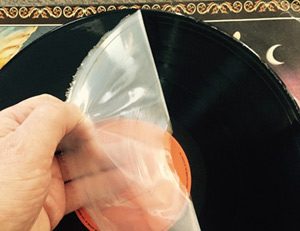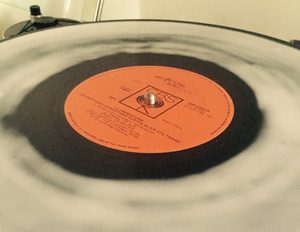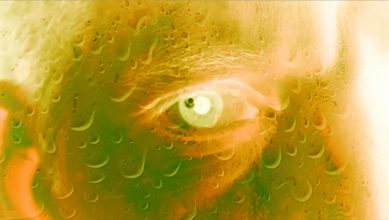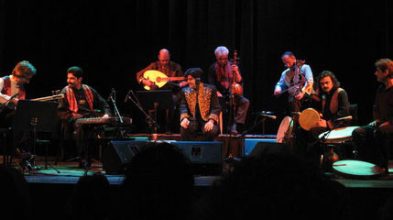5.1 Surround Sound Music & Video – Continental Drift on 3BBR & CRN – Australian Television – Paintings – Design – Cartoons – Animation – Sculpture – Woodcraft



This is as much a story of the creative process behind a new work as it about cleaning LP records.
I recently discovered a YouTube video that really sparked my curiosity.
I watched with interest as a generous spiral of viscous PVA wood glue was squeezed onto the entire surface of a record, then pressed into the grooves with a straight piece of cardboard and smoothed out evenly to the outer edge and left to dry for a day. I felt compelled to try it out on the grottiest record in my possession, one bestowed upon me by a friend. This copy of Illuminations with Alice Coltrane and Carlos Santana was so crackly, that I'd set it aside as unplayable because the noise from the dirt was as loud as the music. I really hate that, when artefacts of the storage medium ruin the listening experience.
So Illuminations was my canary, and part of the trial obviously required me to document a before-and-after sonic comparison. You can judge the results for yourself, with the audio posted below.
The most challenging part of this process was removing the dried glue; simply finding an edge to start peeling it off. If you're going to try this yourself, I'd recommend that you spread the wet glue all the way to the ridge on the outer edge of the record. This is to make it easier to pick at it with a fingernail when you're ready to peel it off carefully in one piece. Obviously keep the glue clear of the paper label, and allow a full 24 hours to dry completely.
Having satisfied myself that the results are quite remarkable, and a great alternative to washing with pure water and a hint of detergent, I was intrigued by the reverse impression I had peeled off. What was previously the upper flat surface was now a long spiraling valley between the musical topography of the upward pointing groove.
So what would happen if you tried to 'play' it? (PVA is a form of vinyl, so I wasn't at all worried about damaging the stylus.) As it happens, the stylus seems to bounce between relatively widely-spaced adjacent 'mountain ranges' of musical information, playing backwards as it works its way from the centre to the outside. Apart from noise, the stylus only gleans musical information in the form of jittery fragments and familiar tonality.
With a keen interest in sound art, this then led me on the path of wondering if I could create a sound piece based on playing the glue. I found myself using this audio as collage material in a surround-sound landscape, using variations like changing the playback speed while preserving the pitch. I also played the peeling a second time slightly off centre, so that the small pitch variations while the tonearm swings from side-to-side (aka 'wow') could be set in sync with a more pitch-stable reading, to create a large and rather wild soundfield.
With the original record including harp, sitar, tabla, orchestra and electric guitar, it seemed only right that I should frame the result with some string and harp samples for added interest (and a tongue planted in my cheek). The finishing touch was a few splashes of guitar noise and sitar. "Impressions of Alice" was born.
You can play the the 5.1 Surround Sound mix at http://havrillay.com/impressions-of-alice





